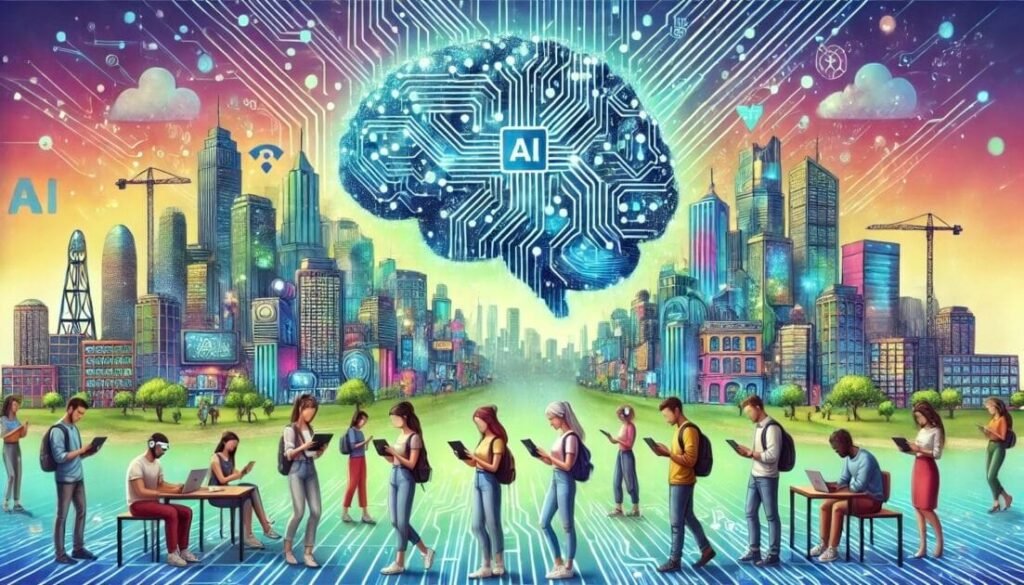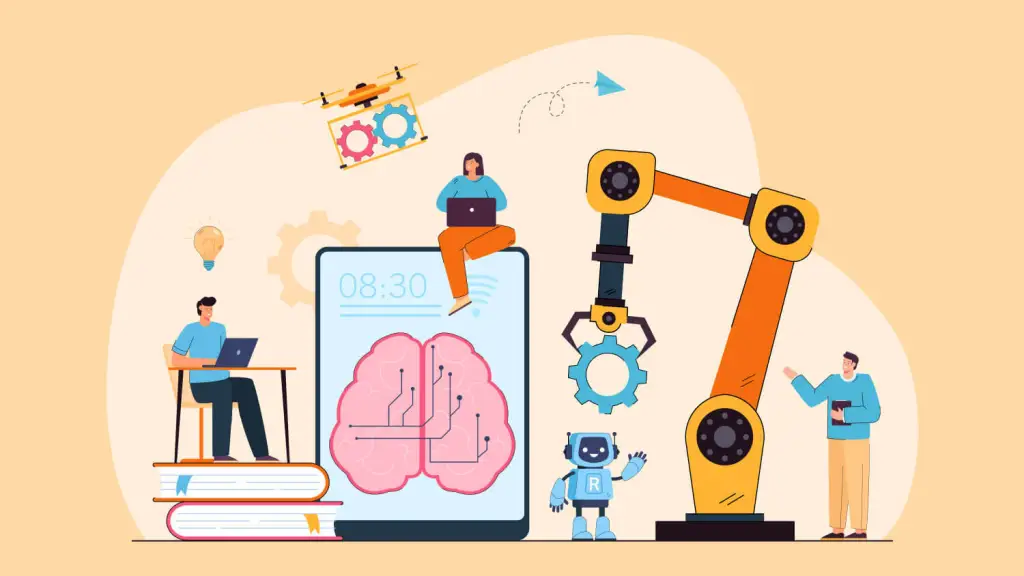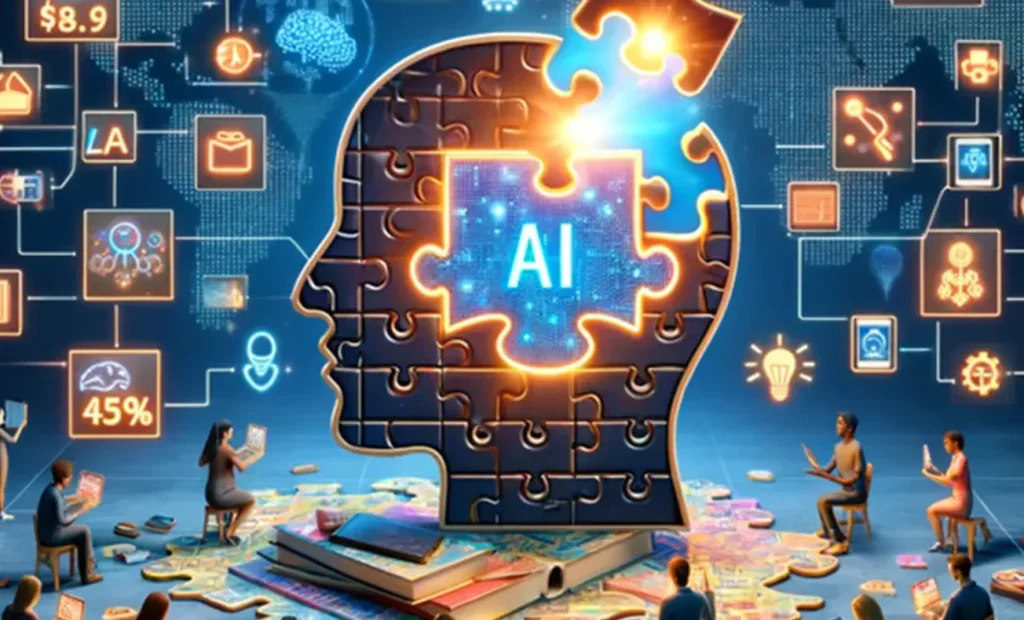Artificial Intelligence has emerged as a transformative force reshaping industries, economies, education, and social dynamics worldwide.
Identified as the cornerstone of the Fourth Industrial Revolution, AI is accelerating automation, transforming traditional workflows, and prompting a radical redefinition of employment and human capability.
AI as a Disruption and Structural Change
AI can perform routine and repetitive tasks with precision. This means traditional jobs that rely on rule based or manual activities may shrink or disappear. Professions like data entry, basic accounting and routine customer service are already being replaced by AI powered platforms. The implication is clear. Students must focus on gaining new skills and adapting to a digital future.
- Job Replacement: AI excels at automating routine, rule-based tasks. A study by Frey and Osborne estimated that roughly 47% of current jobs are susceptible to automation en.wikipedia.org.
- Current Reality: In the U S, nearly 1.9 million jobs have already been impacted by AI-based workplace changes by early 2025 sqmagazine.co.uk.
Key sectors affected include data entry, clerical roles, basic customer service, and assembly-line manufacturing. According to a global projection, up to 800 million jobs may be affected by automation by 2030 .

Source: The Ivy Institute blog — How AI Could Affect Your Career Choice theivyinst.org
AI as an Opportunity for Creates New Careers
While AI replaces certain roles, it also creates new ones. Professions in data analytics, machine learning, cybersecurity, robotics, digital ethics and AI programming are rising in demand. AI can also work as an assistant for doctors, teachers, researchers and engineers, making their work more productive. The takeaway is that AI is a tool for empowerment, not just disruption.
- Emerging Roles: Data scientists, prompt engineers, cybersecurity experts, AI ethics officers, and robotics specialists have become critical to AI-enabled fields.
- Job Creation vs Displacement: While massive displacement looms, AI is also projected to create 133 million new jobs globally by 2030 aiprow.com+5ft.com+5sqmagazine.co.uk+5nypost.com+11worldmetrics.org+11news.com.au+11.
India exemplifies this trend with 3.8 crore (38 million) jobs projected to be transformed by GenAI by 2030, promising productivity gains of approximately 2.6–2.8% cfo.economictimes.indiatimes.com.

Source: Salesforce — Human‑AI Collaboration: How to Work Together fortuneindia.com+3fii-institute.org+3wired.com+3salesforce.com
AI and Education for the Future
For students, AI brings personalized learning. AI powered platforms can adjust lessons based on individual abilities, making education more inclusive and accessible. In the future, students will have to focus on higher order skills like critical thinking, emotional intelligence, teamwork and creative problem solving. Education policies must evolve to teach coding, digital literacy and AI ethics.
AI-powered learning systems are road‑mapping individualized study plans, adjusting to each learner’s pace and style.
- A 2025 survey found that 70% of Indian employees already use AI daily at work economictimes.indiatimes.com+1cfo.economictimes.indiatimes.com+1.
- India’s position is even more striking: 96% of professionals use AI tools — a rate higher than that in the United States and United Kingdom outlookbusiness.com.
This necessitates a profound shift in pedagogy—away from rote memorization toward critical thinking, creativity, digital literacy, and collaborative problem solving.
New Mindset for Students
To thrive in an AI dominated future, students must evolve from traditional job seekers to adaptable problem solvers. This means focusing on technological literacy and soft skills. Learn programming languages, understand AI concepts and practice critical thinking every day. Lifelong learning will be the key to staying relevant.
To thrive in an AI‑augmented future, students should focus on:
- Technical Skills: Programming (Python, R), AI concepts, data science, machine learning, cybersecurity basics
- Human-Centered Skills: Emotional intelligence, creative ideation, ethical reasoning, teamwork, complex problem solving
- Continuous Learning: Regular updates on AI tools, certifications, and platforms like Coursera, NPTEL, Emeritus
AI and Policy Framework
Government and institutions must build policies for responsible AI usage. A strong national AI policy can support upskilling and reskilling for students and working professionals. Regulations and incentives can also foster ethical AI development. This will ensure that AI benefits all sections of society and does not deepen existing divides.
- Corporate Leadership Signals: CEOs at Amazon, IBM, Salesforce, JPMorgan Chase, and BT Group have warned employees about upcoming AI‑driven workforce reductions thetimes.co.uk+4washingtonpost.com+4theguardian.com+4.
- Balancing Act: These leadership moves stress the importance of training and reskilling to mitigate anxiety and preserve morale aiprow.com+1timesofindia.indiatimes.com+1.
- AI Governance: Governments must enact policies that combine innovation with equity: reskilling programs, ethical AI guidelines, and inclusive tech access.

Source: EdNewsDaily — Embracing AI, Navigating Job Evolution and Thriving in the Future Workplace stlouisfed.org+7ednewsdaily.com+7axios.com+7
The AI Jobs Paradox for Competitive Exams
AI will displace routine jobs but create new roles that require higher order thinking and digital literacy. Understanding this paradox is crucial for competitive exams. An ideal answer should highlight both the challenges and opportunities posed by AI, including examples across agriculture, manufacturing, education and healthcare. End with the idea that humans and AI must evolve together for a sustainable future.
| Aspect | Description |
|---|---|
| Disruption | Routine roles are automating rapidly |
| Opportunity | New, tech-driven roles are emerging |
| Net Impact | Uncertain—context and policy matter |
India’s AI Landscape
- AI Investment: Projected to reach ₹978 billion by 2025, potentially boosting GDP by ₹41,500 billion allaboutai.com.
- Academic Infrastructure: With centers of excellence—such as IIT Bombay’s and IIT Madras’s AI labs—and the IndiaAI Mission, India is building capacity and talent en.wikipedia.org.
- Workforce Statistics: While 96% of professionals already use AI tools, 57% of executives are actively planning AI adoption allaboutai.com+15outlookbusiness.com+15economictimes.indiatimes.com+15.
- Talent Gap: Despite high adoption, India faces a 51–73% gap in skilled AI professionals linkedin.com.
Strategic Recommendations
For Students:
- Learn both hard and soft skills, including digital literacy and ethical understanding
- Engage with AI tools – start small and build expertise
- Prepare for roles that AI can’t fill: design, leadership, judgement-based decision making
For Policymakers:
- Invest in reskilling initiatives (Skill India, AI academies)
- Include AI literacy in school and college curriculums
- Incentivize public-private partnerships for inclusive growth
Final Thought for Students
AI is not here to replace you. It is here to redefine your role in society. The future of work will belong to those who learn new digital skills, think creatively and adapt quickly. By focusing on learning and applying new ideas, students can make AI a catalyst for a brighter and more productive future.



